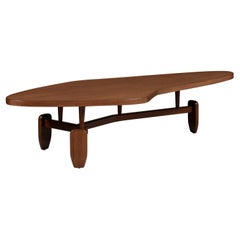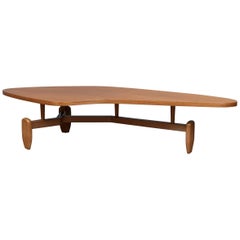John Keal Outrigger Coffee Table
Recent Sales
Vintage 1950s American Mid-Century Modern Coffee and Cocktail Tables
Wood, Mahogany
Vintage 1950s American Mid-Century Modern Coffee and Cocktail Tables
Mahogany
Vintage 1950s American Mid-Century Modern Coffee and Cocktail Tables
Mahogany
Vintage 1950s American Mid-Century Modern Coffee and Cocktail Tables
Mahogany
Vintage 1950s American Mid-Century Modern Coffee and Cocktail Tables
Mahogany, Walnut
Mid-20th Century American Mid-Century Modern Coffee and Cocktail Tables
Mahogany
Vintage 1950s American Mid-Century Modern Coffee and Cocktail Tables
Mahogany, Laminate
Vintage 1970s American Mid-Century Modern Coffee and Cocktail Tables
Mahogany
Vintage 1950s American Mid-Century Modern Coffee and Cocktail Tables
Wood, Mahogany
Vintage 1950s American Mid-Century Modern Coffee and Cocktail Tables
Wood, Mahogany, Walnut
Vintage 1950s American Mid-Century Modern Coffee and Cocktail Tables
Mahogany
Vintage 1950s American Mid-Century Modern Coffee and Cocktail Tables
Mahogany
Mid-20th Century American Mid-Century Modern Coffee and Cocktail Tables
Mahogany
Vintage 1950s American Mid-Century Modern Coffee and Cocktail Tables
Mahogany
John Keal for sale on 1stDibs
At a time when many furniture makers were turning to cheaper materials for mass production, mid-century modern designer John Keal didn't shy away from utilizing quality woods in his work, like mahogany and walnut to create his coffee tables, cabinets and benches.
While little is known about Keal, he was part of a powerhouse group that collaborated with Los Angeles furniture manufacturer Brown-Saltman in the 1940s and ‘50s. Other designers who had partnered with the firm during the mid-20th century included Greta Magnusson Grossman, Paul Frankl, Paul Laszlo, and Gilbert Rohde, a New York City-born designer who would help legendary Michigan furniture manufacturer Herman Miller avert financial disaster during the Great Depression.
Brown-Saltman was established in 1923 and initially specialized in reproductions of furniture in period styles. When cofounder David Saltman met Frankl, the firm had discontinued its Early California collection and was producing modern furniture.
The Austrian-born Frankl was already a big name in decorating in California in the late 1930s — his clients were Hollywood movie stars who were drawn to pieces such as his Art Deco-style Skyscraper series and other biomorphically shaped designs that showed the influence of Chinese and Japanese forms (Brown-Saltman’s offerings were frequently demonstrative of Asian influences). Frankl had become interested in producing inexpensive furniture for middle-class consumers, and his 1940s-era collaboration with Brown-Saltman was a success — print advertisements touted his name as well as the fact that these furnishings, which drew on the clean lines of chrome-framed Bauhaus pieces but instead integrated organic materials, were intended for modern homes.
Keal’s work also fit snugly into what we now call California modernism, which derived from the Bauhaus and International Style movements, and revolutionized the way we build homes today, not only in the Golden State but across the globe. Keal created sleek end tables in walnut and topped with enameled copper and upholstered low-profile dining chairs framed in bleached mahogany for Brown-Saltman as well as other West Coast mid-century brands such as Glenn of California and Modeline.
Find vintage John Keal seating, storage pieces and tables on 1stDibs.
A Close Look at mid-century-modern Furniture
Organically shaped, clean-lined and elegantly simple are three terms that well describe vintage mid-century modern furniture. The style, which emerged primarily in the years following World War II, is characterized by pieces that were conceived and made in an energetic, optimistic spirit by creators who believed that good design was an essential part of good living.
ORIGINS OF MID-CENTURY MODERN FURNITURE DESIGN
- Emerged during the mid-20th century
- Informed by European modernism, Bauhaus, International style, Scandinavian modernism and Frank Lloyd Wright’s architecture
- A heyday of innovation in postwar America
- Experimentation with new ideas, new materials and new forms flourished in Scandinavia, Italy, the former Czechoslovakia and elsewhere in Europe
CHARACTERISTICS OF MID-CENTURY MODERN FURNITURE DESIGN
- Simplicity, organic forms, clean lines
- A blend of neutral and bold Pop art colors
- Use of natural and man-made materials — alluring woods such as teak, rosewood and oak; steel, fiberglass and molded plywood
- Light-filled spaces with colorful upholstery
- Glass walls and an emphasis on the outdoors
- Promotion of functionality
MID-CENTURY MODERN FURNITURE DESIGNERS TO KNOW
- Charles and Ray Eames
- Eero Saarinen
- Milo Baughman
- Florence Knoll
- Harry Bertoia
- Isamu Noguchi
- George Nelson
- Danish modernists Hans Wegner and Arne Jacobsen, whose emphasis on natural materials and craftsmanship influenced American designers and vice versa
ICONIC MID-CENTURY MODERN FURNITURE DESIGNS
- Eames lounge chair
- Nelson daybed
- Florence Knoll sofa
- Egg chair
- Womb chair
- Noguchi coffee table
- Barcelona chair
VINTAGE MID-CENTURY MODERN FURNITURE ON 1STDIBS
The mid-century modern era saw leagues of postwar American architects and designers animated by new ideas and new technology. The lean, functionalist International-style architecture of Le Corbusier and Bauhaus eminences Ludwig Mies van der Rohe and Walter Gropius had been promoted in the United States during the 1930s by Philip Johnson and others. New building techniques, such as “post-and-beam” construction, allowed the International-style schemes to be realized on a small scale in open-plan houses with long walls of glass.
Materials developed for wartime use became available for domestic goods and were incorporated into mid-century modern furniture designs. Charles and Ray Eames and Eero Saarinen, who had experimented extensively with molded plywood, eagerly embraced fiberglass for pieces such as the La Chaise and the Womb chair, respectively.
Architect, writer and designer George Nelson created with his team shades for the Bubble lamp using a new translucent polymer skin and, as design director at Herman Miller, recruited the Eameses, Alexander Girard and others for projects at the legendary Michigan furniture manufacturer.
Harry Bertoia and Isamu Noguchi devised chairs and tables built of wire mesh and wire struts. Materials were repurposed too: The Danish-born designer Jens Risom created a line of chairs using surplus parachute straps for webbed seats and backrests.
The Risom lounge chair was among the first pieces of furniture commissioned and produced by legendary manufacturer Knoll, a chief influencer in the rise of modern design in the United States, thanks to the work of Florence Knoll, the pioneering architect and designer who made the firm a leader in its field. The seating that Knoll created for office spaces — as well as pieces designed by Florence initially for commercial clients — soon became desirable for the home.
As the demand for casual, uncluttered furnishings grew, more mid-century furniture designers caught the spirit.
Classically oriented creators such as Edward Wormley, house designer for Dunbar Inc., offered such pieces as the sinuous Listen to Me chaise; the British expatriate T.H. Robsjohn-Gibbings switched gears, creating items such as the tiered, biomorphic Mesa table. There were Young Turks such as Paul McCobb, who designed holistic groups of sleek, blond wood furniture, and Milo Baughman, who espoused a West Coast aesthetic in minimalist teak dining tables and lushly upholstered chairs and sofas with angular steel frames.
As the collection of vintage mid-century modern chairs, dressers, coffee tables and other furniture for the living room, dining room, bedroom and elsewhere on 1stDibs demonstrates, this period saw one of the most delightful and dramatic flowerings of creativity in design history.
Finding the Right coffee-tables-cocktail-tables for You
As a practical focal point in your living area, antique and vintage coffee tables and cocktail tables are an invaluable addition to any interior.
Low tables that were initially used as tea tables or coffee tables have been around since at least the mid- to late-1800s. Early coffee tables surfaced in Victorian-era England, likely influenced by the use of tea tables in Japanese tea gardens. In the United States, furniture makers worked to introduce low, long tables into their offerings as the popularity of coffee and “coffee breaks” took hold during the late 19th century and early 20th century.
It didn’t take long for coffee tables and cocktail tables to become a design staple and for consumers to recognize their role in entertaining no matter what beverages were being served. Originally, these tables were as simple as they are practical — as high as your sofa and made primarily of wood. In recent years, however, metal, glass and plastics have become popular in coffee tables and cocktail tables, and design hasn’t been restricted to the conventional low profile, either.
Visionary craftspeople such as Paul Evans introduced bold, geometric designs that challenge the traditional idea of what a coffee table can be. The elongated rectangles and wide boxy forms of Evans’s desirable Cityscape coffee table, for example, will meet your needs but undoubtedly prove imposing in your living space.
If you’re shopping for an older coffee table to bring into your home — be it an antique Georgian-style coffee table made of mahogany or walnut with decorative inlays or a classic square mid-century modern piece comprised of rosewood designed by the likes of Ettore Sottsass — there are a few things you should keep in mind.
Both the table itself and what you put on it should align with the overall design of the room, not just by what you think looks fashionable in isolation. According to interior designer Tamara Eaton, the material of your vintage coffee table is something you need to consider. “With a glass coffee table, you also have to think about the surface underneath, like the rug or floor,” she says. “With wood and stone tables, you think about what’s on top.”
Find the perfect centerpiece for any room, no matter what your personal furniture style on 1stDibs. Browse a vast selection of antique, new and vintage coffee table and cocktail tables today.

